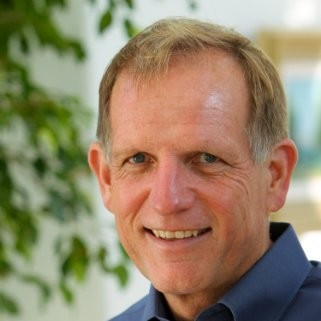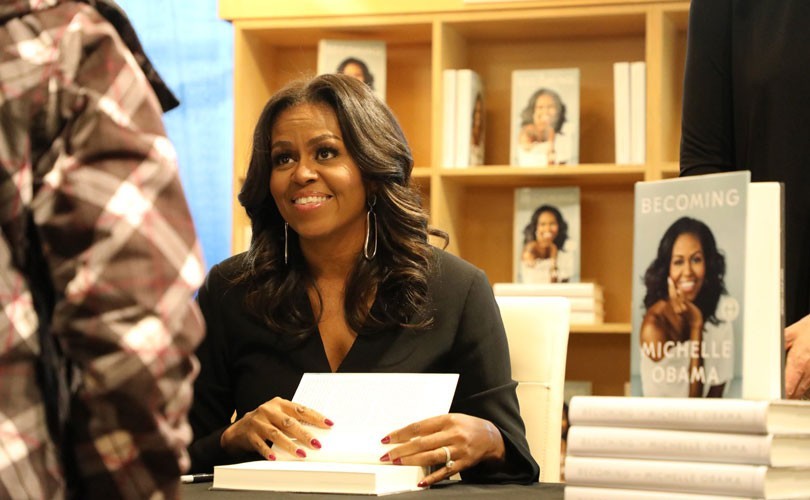Michelle Obama Shares 3 Ideas to Help Companies Recruit Diverse Talent
After eight years in the White House, former U.S. first lady Michelle Obama has lots of things she wants to say. And, quite clearly, people want to hear them. Her memoir, Becoming, was published in mid-November, sold 725,000 copies in one day, and needed just two weeks to become the best-selling book of 2018.
The book chronicles her childhood in Chicago’s South Shore, her education at Princeton and Harvard Law School, her marriage to Barack Obama, and her eight years in the White House. It also details her legal career, which turns out to be a gift for recruiters and hiring managers, particularly any who are grappling with how to create a more diverse workforce.
When Michelle Robinson arrived at Chicago’s Sidley & Austin law firm in 1988 as a junior associate, she didn’t find many people who looked like her. The prestigious partnership was a classic “white-shoe firm” that had been the domain of white men for most of its venerable 122-year history history. She was assigned to help with the firm’s campus recruiting, and she writes that the challenge was to not roll over and simply accept the status quo.
“[M]y goal was to bring in law students,” she writes, “who were not just smart and hard-driving but also something other than male and white.”
Decades before diversity became the No. 1 topic in recruiting, the future first lady developed an approach to finding underrepresented talent that has been validated by time and research. Here are the three tactics Michelle Obama shares in Becoming:
1. Recruit at colleges and universities that have more diverse student bodies
Like many firms, Sidley & Austin (now Sidley Austin LLP) engaged students from the same elite group of law schools that graduated most of the firm’s lawyers. It was, as the former first lady pegged it, “a circular process.”
“Trying to remedy the imbalance,” she writes, “I pushed for us to consider law students coming from other state schools and from historically black colleges like Howard University.”
While expanding campus recruiting to schools that have a lot of underrepresented students was a somewhat radical notion 30 years ago, recruiting experts like Glen Cathey now tout it as an essential tactic. Glen, the SVP of global digital strategy and innovation at Randstad, points out that recruiters can use lists of historically black colleges and universities, women’s colleges and universities and tribal colleges and universities to successfully source candidates from underrepresented groups. Ditto for the 300+ Hispanic Serving Institutions.
2. Look beyond transcripts and test scores
Michelle Obama also questioned the practice of seeking only candidates with an idealized education of perfect grades at a perfect school.
“I objected anytime a student was automatically dismissed for having a B on a transcript,” she writes, “or for having gone to a less prestigious undergraduate program.”
Her insistence that successful recruiting required more than a scan of a candidate’s college transcript has had some compelling echoes in recent years. Laszlo Bock, the former SVP of people operations at Google, dismissed that company’s onetime reliance on grades and scores. “One of the things we’ve seen from all our data crunching,” he said of his time with Google, “is that GPAs are worthless as a criteria for hiring.” Ernst & Young in the United Kingdom echoed that conclusion, dropping its degree requirement after finding “no evidence to conclude that previous success in higher education correlated with future success in subsequent professional qualifications undertaken.”
Many companies have also taken to heart the former first lady’s call to search beyond the 10 or 15 prestige colleges and universities at which they’ve always recruited. In an article titled “Firms Are Wasting Millions Recruiting on Only a Few Campuses,” the Harvard Business Review said: “[M]any high-achievers, especially from disadvantaged backgrounds, attend less prestigious universities for reasons having nothing to do with ability. Yet, by adopting exclusionary school lists and school quotas, firms systematically close their eyes to talent that resides elsewhere.”
3. Look at candidates more holistically — and give weight to their life experiences and perspectives
In many people, different and sometimes difficult life experiences can fire lifelong creativity, innovation, and grit. “If we were serious about bringing in minority lawyers, I asserted, we’d have to look more holistically at candidates,” Michelle Obama recounts. “We’d need to think about how they’d used whatever opportunities life had afforded them rather than measuring them simply by how far they’d made it up an elitist academic ladder.”
The point, she emphasizes, was not to lower the firm’s standards. It was instead to redefine excellence so that included a wider pool of people who could contribute to Sidley & Austin’s success. “We needed,” she writes, “to interview more students, in other words, before writing them off.” She pushed them to look for potential not pedigree.
It’s an approach that can help organizations escape the “circular process” that the former first lady found in play at Sidley & Austin. LinkedIn’s CEO, Jeff Weiner, has adopted a similar take. He told a conference in Arizona: “Increasingly, I hear this mantra: skills, not degrees. It’s not skills at the exclusions of degrees. It’s just expanding our perspective to go beyond degrees.”
Final thoughts: Achieving diversity demands that we look at the world differently
The former first lady writes that she loved taking recruiting trips to Harvard on behalf of Sidley & Austin, partly because it gave her some sway over which students the firm interviewed and partly because it provided her opportunities to visit her future husband, who had been a summer associate at the firm.
The first time she visited Barack Obama in Cambridge he picked her up in his car — “a snub-nosed, banana-yellow Datsun” that had a rusted-out hole in the passenger-side floorboard. He smoked cigarettes and had “a whiff of geekiness.” Though tall, thin, and remarkably articulate, this Harvard law student had clearly not been delivered from central casting.
And that is Michelle Obama’s chief point about diversity: You’re not going to find it at central casting. You’re going to find it by scouring new places and by looking for people who have enormous potential that has been tempered by a different set of life experiences.
*Image from Michelle Obama's Facebook
To receive blog posts like this one straight in your inbox, subscribe to the blog newsletter.
Topics: Talent leadership Diversity
Related articles




